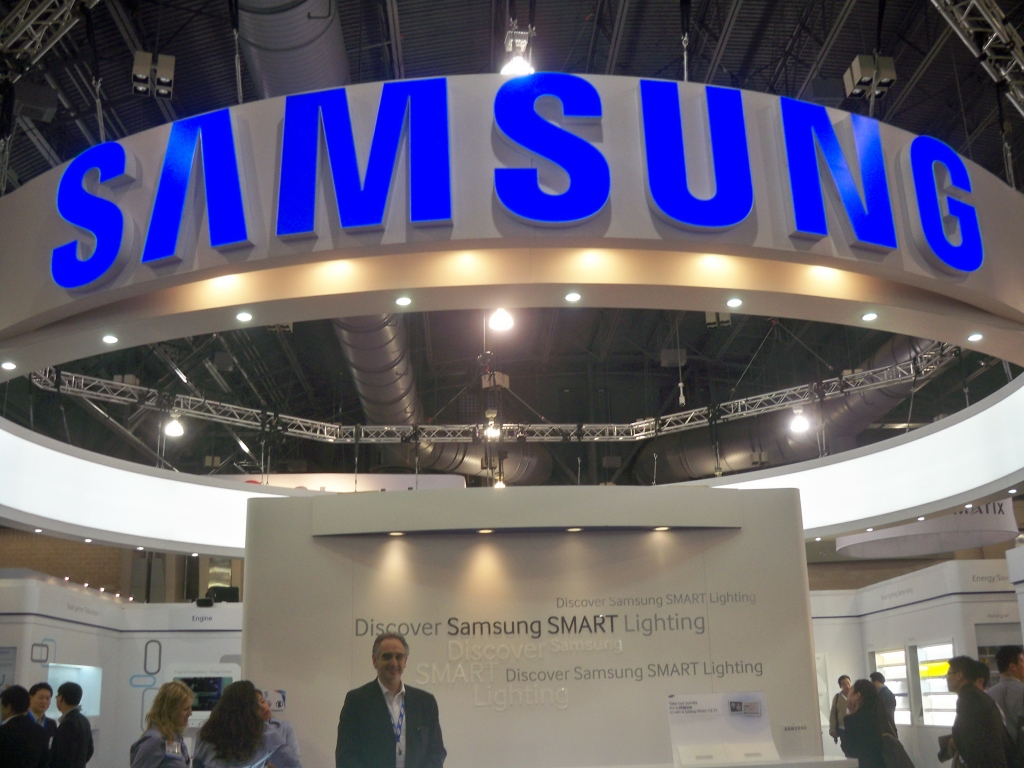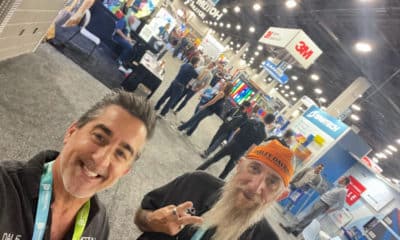LEDs + Lighting
Lightfair 2013
Lighting industry continues with unprecedented growth and change
Published
11 years agoon

As president of IEM LED Lighting Technologies, Dr. M. Nisa Khan consults in the solid-state lighting industry and educates consumers about LED lighting. She has a bachelor’s degree in physics and mathematics, and master’s and Ph.D. degrees in electrical engineering. Email her at nisa.khan@iem-led.com
LED lighting is boldly staring in face of the lighting industry and, literally, anyone who cares to examine it. Such was the proof at the 2013 Lightfair Intl. (LFI) tradeshow, held this year at the Philadelphia Convention Center, with more than 24,000 lighting aficionados in attendance. The interest was so huge — the show comprised more than 500 exhibitors, of which 80 were first-timers — that tradeshow sponsors added floor space.
There, as elsewhere with LED lighting, opportunities brightened and, interestingly, the pronounced intensity was both literal and figurative because light from the LED lamps at Lightfair were also extremely bright. LED lighting introductions and the attendees accompanying energy and interest seemed more heightened than in previous years.
Almost all exhibitors’ highlighted products and services encompassed LED-lighting’s supply chain. Other lighting technologies or products were barely visible.
With few exceptions, LED lamp or luminaire designers swept most of the LFI Innovation Awards (governed by IES and IALD).
Undoubtedly, the lighting industry’s focus is on LEDs, despite the lamps’ capture of a small market share from the overall illumination industry — a fact not recognized by many industry participants.
Almost everyone appeared reluctant to speak against LEDs’ future. More so, companies seemed eager to devote additional (and significant) monies to expand their LED lighting business. The success LED lamps have found in the backlighting and signage industries have encouraged people to believe similar change will come to the greater illumination market.
LED backlighting has dominated the display market; it’s now nearly saturated. However, I expect the signage and entertainment LED industry to continue sustainable growth.
Question: Will the illumination market that surrounds residential and commercial segments adopt LED lighting as a primary choice?
And, will it be sustainable?
Boom times
In recent times, we’ve all seen unprecedented boom and bust in other industries. Remember the Internet and real-estate bubbles? The financial industry collapse in 2008? And, do you remember how optical-fiber deployment exponentially expanded in the late 90s? By 2001, an unsustainable glut of dark fibers and other network equipment destroyed many fortunes and jobs.
New (and often disruptive) technology’s enormous growth can be natural and necessary — but channeling extraordinary capital and resources to support plausible technologies, without proper planning and timing, can lead to painful scenarios.
So how can we carefully handle the current boom in the LED industry?
Part of LED lighting’s success relates to quickly gained performance improvements in lamp-color properties and efficacy — coupled with LEDs compatibility with high-speed electronic drivers that allow for intelligent, lumen-consumption control.
While these actions are possible with incandescent and fluorescent lighting, neither provides the above features simultaneously.
LED lighting’s disadvantages remain. However, these shortcomings are not readily recognized by consumers — or, in some cases, by the LED and lighting professionals. The prevalent drawbacks including glare, excessive heating (due to inadequate thermal management) and lumen degradation.
Such weaknesses will unfurl over time, as consumers continue to buy and use LEDs.
Just as the concerns of such engineered, financial-derivative products as collateralized debt securities (CDS) were ignored in 2008, many LED lighting-industry investors are overlooking certain disadvantages or sustainability issues. For example, numerous companies are relying on LED lighting’s success in the general illumination market and , in the near future, because significant lamp sales are already a reality in such countries as China, South Korea and Japan. These countries also have the most LED lamp and luminaire manufacturers, and they believe Europe and the Americas will soon change over to LED lamps and fixtures.
Certainly, the industry recognizes many smaller manufacturers will fade away, but most hope bigger firms will acquire them. Expect consolidation to abound, but not before disjointed proliferation ensues. Consolidation, of course, will bring added coherence in the industry.
Investors and risks
Presently, a great deal of venture capital and government money is flowing into the LED lighting industry worldwide; however, if adequate revenue and profit are not materialized and sustained within projected timeframes, and if other solutions prove to be more competitive, the LED lighting industry will significantly slow and for a prolonged period. While the lighting future is perceived as LEDs, and the future will surely include further LED developments, it’s more important to pay attention to which futuristic lighting could make history.
Samsung, LG Innotek, GE and Osram Sylvania believe they’ll become one of the dominant LED lighting suppliers. Samsung and LG currently enjoy hefty revenues and profits from their consumer electronic businesses, and understandably believe their semiconductor-manufacturing prowess will settle their win for LED lighting that also uses similar technologies.
Samsung is bullish on LED lighting and exclusively used LED lamps and luminaires to display their LED products while providing general illumination in their booth. GE is confident because of its long and glorious history in many high-tech industries, including lighting, electrical appliances, power generators and avionics.
Nonetheless, the unanswered question remains: Can LED replacement lamps and luminaires provide desirable illumination over large, volumetric space with good color quality, and at low cost?
Cost savings necessary
Because cost savings from energy efficiency and longevity are theoretical, the on-shelf cost must be low enough for consumers to consider LED replacement lamps. Key innovations in numerous areas, including compound semiconductor materials, processing, packaging, testing, automation and qualification remain necessary to ensure reliable, LED-lighting products for illumination applications.
To produce the desirable illumination for commercial and residential illumination applications, key design and engineering innovations must ultimately produce optimized solutions in such multi-disciplinary domains as secondary optics, thermal management, electronic drivers and overall, mechanical-form elements. Currently, creating and adopting uniform standards amid such various technical disciplines and depths poses an enormous challenge.
In selective applications, however, LED replacement lamps are making notable advancements. These include high-end, recess-mounted downlights in such places as restaurants, hotel lobbies and law offices that have traditionally used halogen or incandescent lamps.
USAI Lighting (New Windsor, NY) has manufactured downlights for three generations and, at Lightfair, stated the company was switching to LED luminaires. To create broader light distribution than those offered by downlights, innovation in secondary optics will become paramount. Global Lighting and Pixi Flatlight are among the companies at Lightfair that spoke about their light guide technologies that can tailor light distribution for suited uses.
LED lighting is also penetrating outdoor lighting. Such driver companies as Lutron, ERG and Phihong displayed LED drivers that apply intelligent, ambient-light sensing systems to adjust indoor and outdoor illumination.
Six years ago, I envisioned a local, DC-grid overlay in buildings as a great benefit for LED lighting, as well as such communication devices as laptops, tablets and smart phones. Emerge Alliance (www.emergealliance.org) is making this concept a reality with its DC micro grid for offices and homes. The system allows efficient energy use for both LED and fluorescent-lamp applications.
Similarly, I have encouraged the use of lower, LED-drive currents for general illumination applications and now see interesting developments in choices that apply lower current drives (65 mA to 250 mA) in many LED modules. This is a better adoption for general lighting applications than the higher levels (750 mA and higher) pursued by many LED suppliers.
As new technologies mature, high-level technical demands eventually cause confusion to disappear. Unfortunately, the process can take a long time.
The world needs light
Another reminiscent sign indicating the LED industry is overheated comes through Lightfair’s keynote speech by Silicon Valley entrepreneur and venture capitalist, Vinod Khosla. He touted such luxurious LED lighting functionalities as mood lighting at dawn, dusk, and other times of the day. While he offered a strong vision on future, lighting-technology breakthroughs and their possible extravagant functions, it remains that most of the world’s population doesn’t have lighting during dark hours that meets basic demands. This should be a high priority for the lighting industry, along with creating a sustainable environment.
LED signage will remain, and the business will grow further; but extension of such business success isn’t necessarily clear for other illumination applications. Time alone will determine whether LED lamps will become the primary choice for virtually all illumination applications. In the U.S. and Canada, consumers will decide on LED lighting.
Further, expect improved incandescent (of halogen types or hybrids) and fluorescent lamps to impede the growth of LEDs as a common illuminator. An example is Osram Sylvania’s new high-efficiency, color-quality linear T8 lamps that won an LFI Innovation Award this year.
SPONSORED VIDEO
Introducing the Sign Industry Podcast
The Sign Industry Podcast is a platform for every sign person out there — from the old-timers who bent neon and hand-lettered boats to those venturing into new technologies — we want to get their stories out for everyone to hear. Come join us and listen to stories, learn tricks or techniques, and get insights of what’s to come. We are the world’s second oldest profession. The folks who started the world’s oldest profession needed a sign.
You may like
Advertisement
Subscribe

Magazine
Get the most important news
and business ideas from Signsofthetimes Magazine.
Advertisement
Most Popular
-

 Paula Fargo2 weeks ago
Paula Fargo2 weeks ago5 Reasons to Sell a Sign Company Plus 6 Options
-

 Real Deal1 week ago
Real Deal1 week agoA Woman Sign Company Owner Confronts a Sexist Wholesaler
-

 Photo Gallery2 weeks ago
Photo Gallery2 weeks ago21 Larry Albright Plasma Globes, Crackle Tubes and More
-

 Projects1 week ago
Projects1 week agoGraphics Turn an Eyesore Cooler Into a Showpiece Promo in Historic Plaza
-

 Business Management1 week ago
Business Management1 week ago3 Things Print Pros Must Do to Build Stronger Relationships in the Interiors Market
-

 News1 day ago
News1 day ago2024 Sign Contest Open for Submission
-

 News1 week ago
News1 week agoPattison ID New Name of Five Companies
-

 Dale Salamacha5 days ago
Dale Salamacha5 days agoWhat Makes the Perfect Sign Business Partnership










